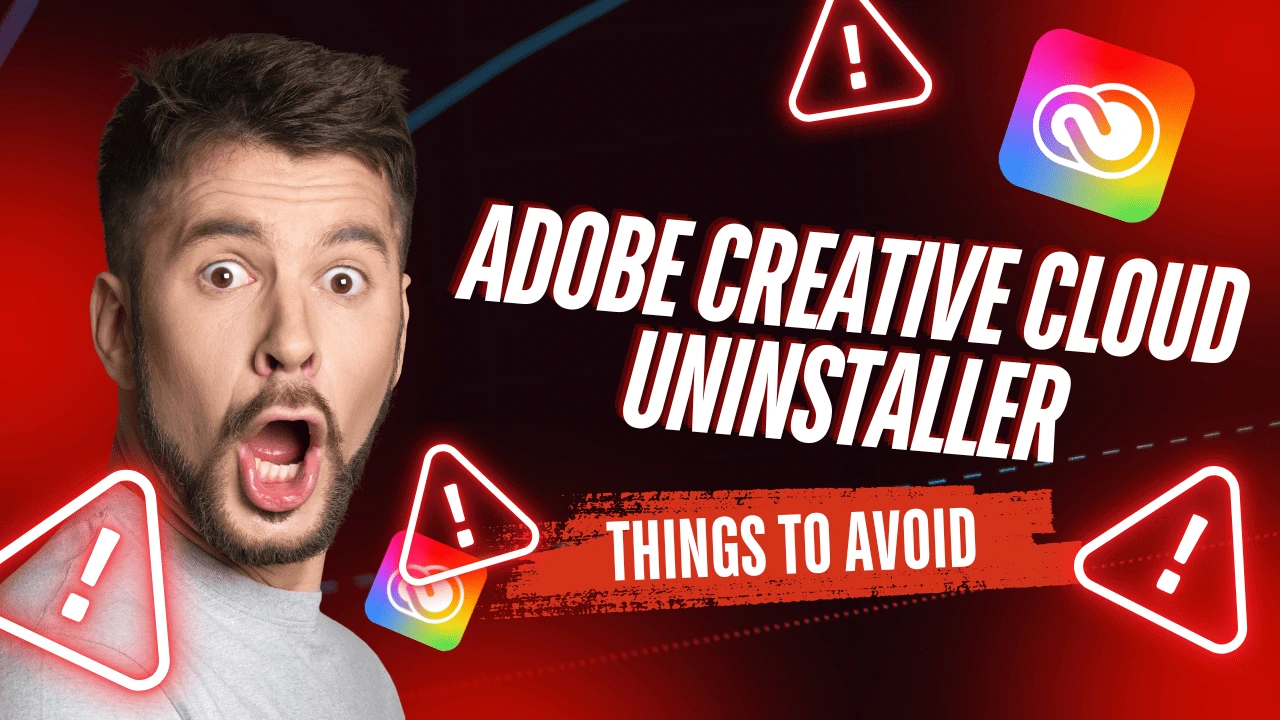Uninstalling Adobe Creative Cloud sounds simple—until it’s not. Maybe you’ve tried to remove it, but the apps linger. Maybe you hit “Uninstall” and nothing happened. Or worse, your system now runs slower than ever. If that sounds familiar, don’t worry—you’re far from alone. The Adobe Creative Cloud Uninstaller is a useful tool, but if used incorrectly, it can leave behind files, block reinstallations, and cause avoidable headaches.
This guide walks you through the 5 most common mistakes people make when using the Adobe Creative Cloud Uninstaller, and how to avoid them—so you can remove Adobe products cleanly and prepare your system for a fresh install or transition.
What Is the Adobe Creative Cloud Uninstaller and Why It Matters
The Adobe Creative Cloud Uninstaller is an official utility designed to remove Adobe Creative Cloud and all associated apps (Photoshop, Illustrator, Premiere Pro, etc.) from your system. Unlike standard system uninstalls, this tool ensures that deep-rooted files, services, and user data are removed without affecting your system performance.
When you uninstall Creative Cloud manually, there’s a risk of leaving registry entries, background services, and hidden files that clutter your system and interfere with future installations. That’s why using the official Adobe tool—and using it properly—is critical.
Mistake 1: Not Backing Up Your Creative Files
One of the easiest mistakes to make is jumping straight into the uninstall process without backing up your work. Adobe’s sync features store your files in the cloud and on your local drive—but uninstalling may remove or alter synced folders if you’re not careful.
Here’s how to protect your work:
- Open the Creative Cloud desktop app and confirm which folders are being synced
- Back up important files to a USB drive, external hard disk, or cloud service like Google Drive
- Sign out from Creative Cloud before uninstalling to avoid accidental cloud deletions
Taking five minutes to backup can save you hours of frustration later.
Mistake 2: Skipping the Official Uninstaller
Using only your system’s uninstall feature like Windows Apps & Features or dragging an app to the Trash on macOS) often leaves residual files behind. These leftovers can include licensing data, settings, or Adobe services that still run in the background.
Instead:
- Download the official Adobe Creative Cloud Uninstaller
- Run it with administrator privileges
- Follow the guided removal process until you receive confirmation of a complete uninstall
This method is cleaner, faster, and prevents future issues during reinstalls.
Mistake 3: Ignoring Background Processes
Trying to uninstall while Adobe apps are still running will cause the uninstaller to fail—or hang indefinitely. It might seem like nothing is open, but Adobe runs several background processes by default.
What to do:
- On Windows: Open Task Manager → End all Adobe-related processes
- On macOS: Use Activity Monitor → Force quit Adobe processes
- Restart your system if unsure what’s running
This ensures the uninstaller can work without interference.
Mistake 4: Forgetting to Remove Leftover Files
Even with the official uninstaller, some files might remain in hidden directories. These include logs, user settings, or plugin data. If you’re planning a clean reinstall, these files can interfere or cause performance issues.
Recommended cleanup paths:
For Windows:
- C:\Program Files\Adobe
- C:\Program Files (x86)\Common Files\Adobe
- %AppData%\Adobe and %LocalAppData%\Adobe
For macOS:
- ~/Library/Application Support/Adobe
- /Library/Preferences/
- ~/Library/Preferences/Adobe
Warning: Only do this if you’re comfortable accessing system files.
Mistake 5: Not Restarting After the Uninstall
It’s easy to overlook, but restarting your computer after uninstalling is crucial. Without it, temporary files and services may linger in memory, which could interfere with future Adobe installations.
Final Step:
- Restart your computer once the uninstall is complete
- Wait 2–3 minutes before launching any installation packages
- Consider running a disk cleanup tool to clear temporary files
This last step helps reset your system environment and ensures a clean slate.
What to Do After Uninstalling Adobe Creative Cloud
Now that you’ve safely removed Adobe software, you may want to reinstall or upgrade. This is the perfect time to explore your options and find the right Adobe Creative Cloud plan to fit your needs and budget.
Adobe Creative Cloud Pricing Plans
Below is a quick overview of Adobe Creative Cloud plans available. For the most accurate and up-to-date pricing, check out the subscription plans.
Ready to Reinstall or Upgrade?
You’ve cleaned your system, avoided critical mistakes, and now you’re ready to take the next step in your creative journey. Whether you’re a designer, editor, photographer, or creative hobbyist, there’s a Creative Cloud plan tailored for you.
Explore Adobe Creative Cloud PlansFrequently Asked Questions (FAQ)
What does Adobe Creative Cloud Uninstaller do?
It removes Adobe Creative Cloud apps, services, and preferences from your system cleanly and completely.
Is Adobe Creative Cloud Uninstaller safe to use?
Yes, it’s the official removal tool provided by Adobe, designed for error-free uninstalls.
Can I reinstall apps after using the uninstaller?
Absolutely. In fact, a clean uninstall improves performance and fixes errors during new installations.
Where can I download the Adobe Creative Cloud ?
You can download it from Adobe’s official help center.
Conclusion: Clean Uninstall, Smooth Reinstall
Using the Adobe Creative Cloud Uninstaller might seem straightforward, but missing small steps can lead to major issues. By avoiding these five common mistakes, you not only save time—you ensure a healthier, faster system and a smoother creative experience. When you’re ready, pick a plan that suits your workflow and get back to what you do best—creating.








